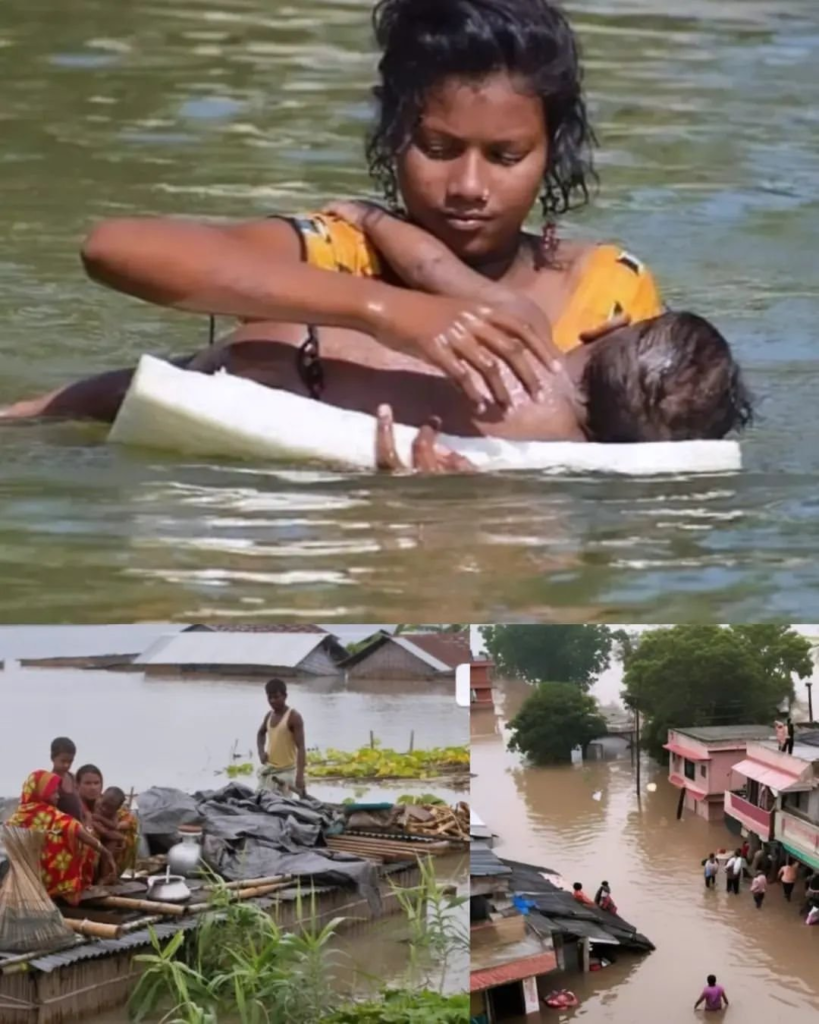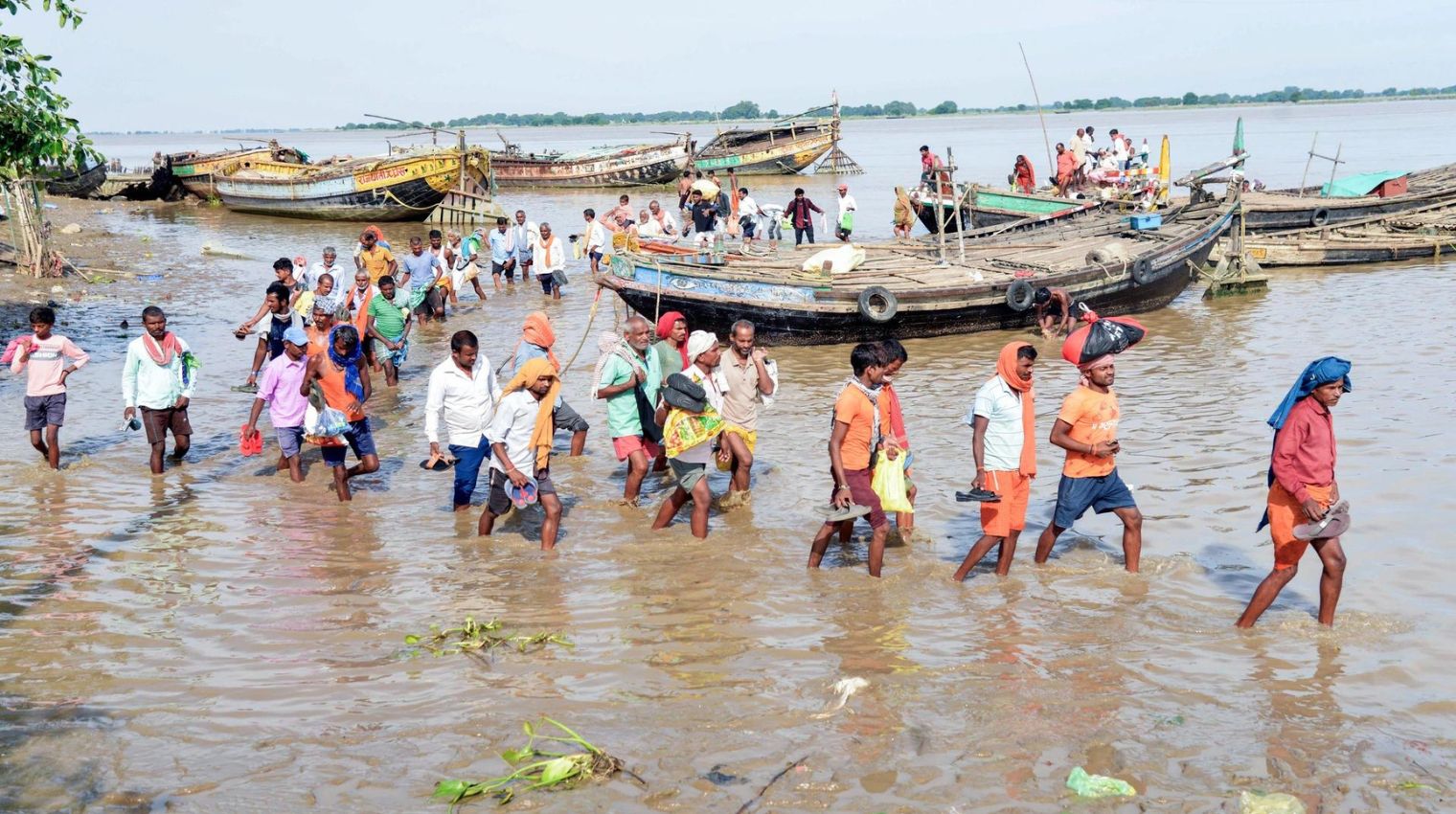Numerous areas of Bihar are still experiencing a serious flood disaster, which has resulted in thousands of people being displaced and extensive damage to farms and infrastructure. The crisis worsened on Sunday when six barrages were breached in a 24-hour period. This caused major rivers, including the Kosi, Gandak, and Bagmati, to overflow, seriously hurting villages close to the border between India and Nepal.
Monday saw a decrease in the barrages’ water output as Nepal’s nonstop rain stopped.

Six National Disaster Response Force (NDRF) teams from outside the state have been contacted in response to the state’s heavy rain and flood alert. Presently, flood relief and rescue operations are being carried out across Bihar by 12 NDRF teams and 22 State Disaster Response Force (SDRF) units.
On Sunday night, the embankment of the Bagmati River failed in at least four locations in the Sitamarhi district, affecting hundreds of people who live near its banks. Moreover, embankments were breached in the districts of Sheohar and West Champaran. The Gandak River breach in West Champaran caused a significant amount of floodwater to enter the Valmiki Tiger Reserve.

Nishikant Kumar, the executive engineer of the Flood Control Division in Bagaha, was suspended as a result of his carelessness and inability to work well with the local authorities in coordination.
Over 1.6 million people are still in danger of flooding, even if the levels in some minor rivers have decreased, according to the state Water Resources Department. According to officials, no deaths have been reported as of yet.

Unprecedented heights have been reached in river water levels. The Gandak River’s Valmikinagar barrage delivered 5.62 lakh cusecs of water, the most since 2003, before today’s release was cut to 1.89 lakh cusecs. According to officials, the Birpur barrage on the Kosi River released 6.61 lakh cusecs, the most in 56 years; the previous record was 7.88 lakh cusecs in 1968.
“Due to the constant rain that has been falling over the past two to three days, the water levels in the Gandak, Kosi, Bagmati, Burhi Gandak, Kamla Balan, Mahananda, and Ganga rivers have been rising throughout the state. River levels in various bordering districts are at or above dangerous levels due to rainfall in Nepal’s catchment areas, according to a statement made on Sunday by Water Resources Minister Vijay Kumar Choudhary.
A government school in Darbhanga’s Raisari neighborhood was flooded when the Kamla Balan stream overflowed. Residents in a panic told India Today that the fast rise in river levels is being caused by water discharges from Nepal.
Thousands of houses have lost their power because the infrastructure is flooded. Floodwaters in Muzaffarpur reached the control room of the electricity grid, prompting officials to issue a warning that 42,000–43,000 customers might potentially lose power at any moment.
East Champaran, Gopalganj, Araria, Supaul, Katihar, Purnea, and a few more districts are among the worst-hit places.
A number of districts have already received alerts from the Meteorological Department, which is forecasting significant rainfall and warning of flash floods in several areas of the state.


Leave a Reply